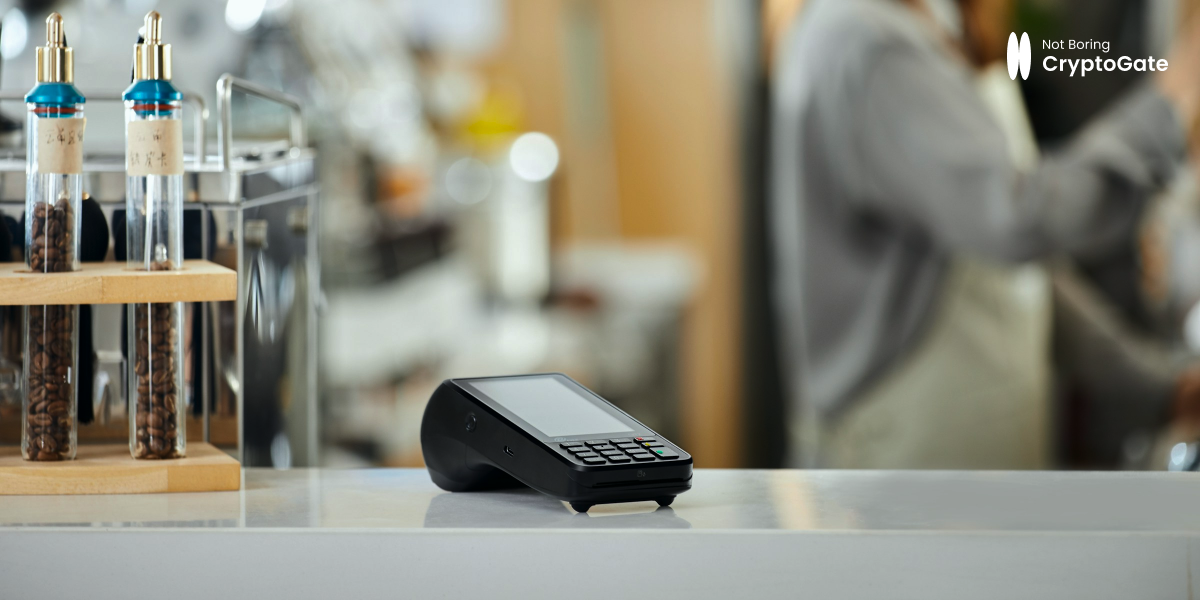
In the world of retail and commerce, the point-of-sale (POS) system is a cornerstone of operations, enabling businesses to process sales transactions efficiently. Whether you’re running a small boutique or a large retail chain, understanding what a POS system is and how it works is crucial for optimizing your business processes. This guide will explore the essentials of POS systems, their components, costs, benefits, and how they’re evolving with cryptocurrency integration.
What is a POS System?
A POS system is the combination of hardware and software that allows a business to conduct sales transactions. At its core, a POS system serves as the central hub where sales are made, payments are processed, and receipts are generated. But modern POS systems do much more than that—they often integrate with inventory management, customer relationship management (CRM), and accounting systems, making them indispensable tools for both online and offline businesses.
Traditionally, POS systems were confined to physical cash registers in stores. Today, however, they have evolved into complex systems that can operate on computers, tablets, or even smartphones. This flexibility allows businesses to manage sales from virtually anywhere, whether it’s at a storefront, an event, or online.
What Does a POS System Include?
A POS system is composed of several key components that work together to facilitate transactions. These components can be broadly categorized into three areas: hardware, software, and payment processing services.
POS Hardware
The hardware of a POS system includes all the physical devices used to process transactions. This typically consists of:
- Cash Register: The traditional cash drawer where money is stored.
- Barcode Scanner: Used to scan product barcodes for quick and accurate pricing.
- Receipt Printer: Generates printed receipts for customers.
- Card Reader: Enables the acceptance of credit and debit card payments.
- Customer Display: Shows customers the items being scanned and the total amount due.
- Tablet or Computer: Acts as the interface for the POS software.
These hardware components can vary depending on the business’s needs. For instance, a small café might only require a tablet with a card reader, while a large retail store might need a full setup with multiple devices.
POS Software
The software component of a POS system is the brain behind the operation. POS software manages everything from processing transactions to managing inventory and generating reports. Key features of POS software typically include:
- Sales Processing: Handles the sales transaction, including calculating totals, applying discounts, and processing payments.
- Inventory Management: Tracks stock levels in real-time, alerts when items are low, and can automatically reorder products.
- Customer Management: Stores customer information, tracks purchase history, and manages loyalty programs.
- Reporting and Analytics: Generates detailed reports on sales performance, employee productivity, and other critical business metrics.
The software can either be cloud-based, offering flexibility and remote access, or on-premise, which might be preferred by businesses needing more control over their data.
Payment Processing Services

Payment processing is the service that enables transactions to be completed when a customer pays by credit card, debit card, or digital wallet. This service involves several steps:
- Authorization: The payment processor checks with the customer’s bank to ensure the funds are available.
- Settlement: Once authorized, the transaction is processed, and the funds are transferred to the merchant’s account.
- Funding: Finally, the merchant receives the funds in their bank account, minus any processing fees.
Payment processing services are often provided by third-party companies, which charge fees for each transaction processed. These services are critical for ensuring secure and efficient payment handling.
How Much Does a POS System Cost?
Investing in a POS system involves several costs, which can vary depending on the system’s complexity and the provider’s pricing model. Here’s a breakdown of the typical costs associated with a POS system:
POS Hardware Costs: Around $1,200 to $1,800 for a Full Setup
The cost of POS hardware can range significantly based on the equipment needed. For a full setup, which includes a cash register, barcode scanner, receipt printer, and card reader, you might expect to pay between $1,200 and $1,800. Smaller businesses that only require a tablet and a card reader can expect to pay less.
POS Software Costs: $0 to Around $400 Per Mont
POS software costs depend on the features and the pricing model. Some providers offer free basic versions with limited features, while more advanced systems with comprehensive capabilities can cost up to $400 per month. Subscription-based pricing is common, and some providers offer discounts for annual billing.
Payment Processing Costs: Around 1.5% to 3.5% Per Transaction
Payment processing fees are typically charged per transaction, with rates ranging from 1.5% to 3.5% of the transaction amount. These fees may vary depending on the type of card used (credit vs. debit) and the payment processor. Some providers also charge additional fees for services like chargeback handling or cross-border transactions.
Additional Benefits of Using a POS System
Beyond just processing sales, POS systems offer a range of additional benefits that can significantly enhance business operations.
Best POS Systems for Small Businesses
For small businesses, choosing the right POS system can make a big difference. The best systems for small businesses are those that are affordable, easy to use, and scalable as the business grows. They should offer essential features like sales tracking, inventory management, and basic customer management. Additionally, integration with accounting software can streamline financial reporting.
Best Merchant Services
Merchant services are essential for handling payment processing, and the best ones offer transparent pricing, reliable customer support, and robust security features. They should be compatible with the chosen POS system and provide seamless integration to avoid disruptions in the sales process.
Best Credit Card Readers for Small Businesses
For small businesses that operate on the go or at pop-up events, having a reliable credit card reader is crucial. The best credit card readers are portable, easy to set up, and compatible with mobile devices. They should support a wide range of payment methods, including chip cards, contactless payments, and mobile wallets like Apple Pay and Google Pay.
What is a Crypto POS System?

A crypto POS system is similar to a traditional POS system, but it allows businesses to accept payments in cryptocurrency. These systems are becoming increasingly popular as more consumers and businesses adopt digital currencies like Bitcoin, Ethereum, and others.
A crypto POS system typically includes both hardware (such as a tablet or mobile device) and software that integrates with a cryptocurrency payment gateway. This setup allows businesses to accept crypto payments either in person or online, converting the digital currency into fiat money, or holding it in a crypto wallet.
What Crypto Can You Accept with PoS Systems?
Crypto POS systems typically support a range of cryptocurrencies. While Bitcoin and Ethereum are the most commonly accepted, many systems also support other popular digital currencies, such as Litecoin, Ripple (XRP), and stablecoins like USDT. The specific cryptocurrencies you can accept will depend on the payment gateway integrated with your POS system.
Using a crypto POS system that supports multiple currencies can provide flexibility and cater to a broader customer base. It’s important to check with your payment provider to see which cryptocurrencies are supported and how they handle conversion to fiat currency.
Why Should Offline Stores Accept Crypto?

There are several compelling reasons for offline stores to start accepting cryptocurrency:
- Attract New Customers: Crypto users are a growing demographic, and accepting crypto can help attract tech-savvy customers who prefer to use digital currencies.
- Lower Transaction Fees: Crypto transactions often have lower fees compared to traditional credit card payments, which can reduce overall processing costs.
- No Chargebacks: Unlike credit card payments, crypto transactions are irreversible, eliminating the risk of chargebacks and the associated costs.
- Global Reach: Cryptocurrencies are borderless, making it easier for businesses to accept payments from international customers without worrying about exchange rates or international transaction fees.
- Stay Ahead of the Curve: As more consumers and businesses adopt cryptocurrency, being an early adopter can position your business as forward-thinking and innovative.
How Popular Are PoS Cryptocurrency Payments?
The popularity of cryptocurrency payments through POS systems has been steadily increasing. In recent years, more merchants have started accepting crypto, driven by the growing adoption of digital currencies and the development of user-friendly crypto payment solutions.
Several studies and reports indicate that a significant percentage of consumers, particularly younger demographics, are interested in using cryptocurrencies for everyday purchases. The rise of stablecoins, which offer the benefits of crypto without the volatility, has also contributed to the increased use of crypto in retail.
As crypto becomes more mainstream, we can expect its popularity in offline payments to continue growing, making it an important consideration for businesses looking to stay competitive.
How to Use a Crypto PoS System?
Using a crypto POS system is straightforward and can be broken down into three main steps:
Set Up Your Account
The first step is to set up an account with a crypto payment provider that supports POS transactions. During this process, you’ll provide necessary information about your business and link your bank account or crypto wallet for receiving payments. Most providers offer easy-to-follow guides for account setup.
Create Your POS Link
Once your account is set up, you’ll need to create a POS link or QR code that customers can use to pay with cryptocurrency. This link can be displayed on a screen or printed out for customers to scan with their mobile wallets. The payment gateway will then process the transaction, converting the crypto into fiat currency if desired.
Get Profit in Crypto
After the transaction is processed, you’ll receive the payment in your chosen currency—either fiat or crypto. If you choose to receive payments in cryptocurrency, you can hold the funds in a crypto wallet or convert them to fiat at your convenience. This flexibility allows you to manage your profits according to your business needs and market conditions.
Frequently Asked Questions (FAQs)
How do POS systems work?
POS systems work by combining hardware and software to process sales transactions, manage inventory, and generate reports. The hardware typically includes devices like cash registers, barcode scanners, and card readers, while the software handles the processing of payments and the management of sales data.
What is the difference between traditional POS and crypto POS systems?
The main difference is that traditional POS systems process payments in fiat currency, while crypto POS systems are equipped to accept and process payments in cryptocurrencies. Crypto POS systems integrate with cryptocurrency payment gateways to handle transactions, often converting the digital currency into fiat or storing it in a crypto wallet.
Are POS systems secure?
Yes, POS systems are generally secure, but it’s important to choose a reputable provider that offers robust security features like encryption, tokenization, and fraud detection. Regular updates and adherence to compliance standards like PCI DSS further enhance security.
How can small businesses benefit from using a POS system?
Small businesses can benefit from POS systems by streamlining sales transactions, improving inventory management, and gaining insights from sales reports. Additionally, POS systems can enhance customer experience by offering faster and more convenient payment options.
Is it expensive to integrate a crypto POS system into my store?
The cost of integrating a crypto POS system depends on the provider and the features you choose. Some providers offer low-cost or even free solutions with basic functionality, while more advanced systems may require an investment in specialized hardware and software. However, the potential savings from lower transaction fees and the ability to attract crypto users can offset these costs.
This article provides a comprehensive overview of POS systems, including their components, costs, and the growing trend of cryptocurrency integration. By understanding how POS systems work and the benefits they offer, businesses can make informed decisions that enhance their operations and customer experience.
At NBCgate, we offer a solution called mPOS. You can use its web version or download the mobile app. Setting up mPOS is easy and you will be able to accept QR code payments in as little as 5-10 minutes. The advantage is that your client will be able to pay with a convenient cryptocurrency and you will receive the money in the currency you are used to (CZK, EUR, USD). The commission is only 1% of the transaction. Register with NBCgate and start using mPOS now!
